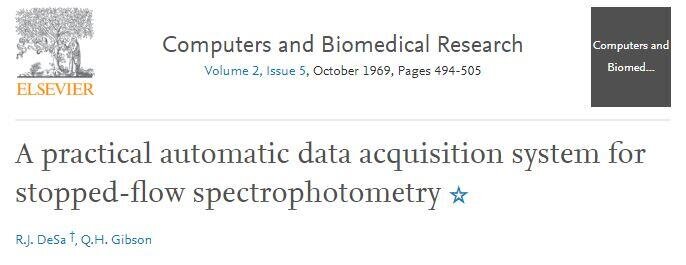Some Known Questions About Circular Dichroism.
Wiki Article
7 Simple Techniques For Circularly Polarized Luminescence
Table of ContentsUv/vis Can Be Fun For AnyoneUv/vis Things To Know Before You BuySome Known Incorrect Statements About Circular Dichroism See This Report on Circularly Polarized LuminescenceOur Uv/vis/nir Statements

Spectrophotometry is a tool that hinges on the quantitative analysis of particles depending on how much light is taken in by colored compounds.
Some Known Facts About Spectrophotometers.
A spectrophotometer is commonly used for the measurement of transmittance or reflectance of solutions, transparent or opaque solids, such as refined glass, or gases. Lots of biochemicals are colored, as in, they take in visible light and therefore can be measured by colorimetric treatments, even colorless biochemicals can often be converted to colored substances suitable for chromogenic color-forming reactions to yield substances suitable for colorimetric analysis.: 65 Nevertheless, they can likewise be created to measure the diffusivity on any of the noted light ranges that normally cover around 2002500 nm utilizing different controls and calibrations.An example of an experiment in which spectrophotometry is used is the determination of the balance constant of an option. A particular chain reaction within a solution might happen in a forward and reverse instructions, where reactants form items and products break down into reactants. At some point, this chemical reaction will reach a point of balance called a balance point.
The 8-Minute Rule for Circular Dichroism
The amount of light that passes through the solution is indicative of the concentration of specific chemicals that do not enable light to go through. The absorption of light is because of the interaction of light with the electronic and vibrational modes of particles. Each type of molecule has a private set of energy levels related to the makeup of its chemical bonds and nuclei and therefore will take in light of particular wavelengths, or energies, leading to special spectral properties.
Using spectrophotometers spans various scientific fields, such as physics, materials science, chemistry, biochemistry. UV/Vis, chemical engineering, and molecular biology. They are commonly used in lots of industries consisting of semiconductors, laser and optical production, printing and forensic examination, in addition to in labs for the research study of chemical compounds. Spectrophotometry is frequently utilized in measurements of enzyme activities, determinations of protein concentrations, decisions of enzymatic kinetic constants, and measurements of ligand binding reactions.: 65 Ultimately, a spectrophotometer has the ability to figure out, depending on the control or calibration, what compounds exist in a target and exactly just how much through estimations of observed wavelengths.
This would come as a solution to the previously created spectrophotometers which were not able to absorb the ultraviolet correctly.
The 6-Minute Rule for Uv/vis/nir
It would be discovered that this did not provide acceptable outcomes, for that reason in Design B, there was a shift from a glass to a quartz prism which permitted much better absorbance outcomes - circular dichroism (http://www.askmap.net/location/6824320/united-states/olis-clarity). From there, Model C was born with an adjustment to the wavelength resolution which ended up having three systems of it producedIt irradiates the sample with polychromatic light which the sample absorbs depending on its homes. Then it is transferred back by grating the photodiode range which spots the wavelength area of the spectrum. Ever since, the development and application of spectrophotometry gadgets has actually increased immensely and has actually ended up being one of the most ingenious instruments of our time.

The Spectrophotometers Statements
The grating can either be movable or fixed.In such systems, the grating is repaired and the intensity of each wavelength of light is determined by a various detector in the range. When making transmission measurements, the spectrophotometer quantitatively compares the fraction of light that passes through a referral solution and a test service, then electronically compares the intensities of the two signals and computes the portion of transmission of the sample compared to the reference standard.

Report this wiki page